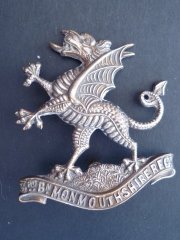Personal Details
Born: 26 December 1886 in Whitchurch, Shropshire and baptised 26 January 1887 at St Alkmund`s Parish Church, Whitchurch. His name was registered on birth as John Passant Jones.
Family: He was the eldest child born to John Passant, a shoemaker and his wife Annie (nee Jones). He married Florence Bateman on 21 December 1908 at St Michael`s Parish Church, Marbury, Cheshire. Together they had seven children, Vera, John, Lillian, Richard, Florence, Harold and Kenneth. Sadly John died in 1911, aged three months.
Residence: At the time of his baptism and in 1891 his family were living in Sherrymill Hill, Whitchurch, Shropshire. By 1911 and now married with a child, his home was 9 Station Road, Whitchurch. This was still his address when he enlisted in the Army in 1915. In 1922 he was living at 4 Wood Street, Hyde, Cheshire and by 1939 he and his family had moved to 42 Woodfield Avenue, Hyde. At the time of his death in 1966 his home was 19 Springwood Close, Romiley, Cheshire.
Employment: He was a postman.
Died: In 1966 in the North East Registration District of Cheshire.
Military Details
Regiment: Monmouthshire Regiment
Rank: Private
Service Number: 227764 (previously 15031 and 4409)
Date of Enlistment: 4 December 1915
Date of Discharge: 2 March 1919
Reason for Discharge: Demobilisation
John was awarded the Campaign Medals (British War medal and Victory medal)

The British War Medal (also known as 'Squeak') was a silver or bronze medal awarded to officers and men of the British and Imperial Forces who either entered a theatre of war or entered service overseas between 5th August 1914 and 11th November 1918 inclusive. This was later extended to services in Russia, Siberia and some other areas in 1919 and 1920. Approximately 6.5 million British War Medals were issued. Approximately 6.4 million of these were the silver versions of this medal. Around 110,000 of a bronze version were issued mainly to Chinese, Maltese and Indian Labour Corps. The front (obv or obverse) of the medal depicts the head of George V. The recipient's service number, rank, name and unit was impressed on the rim.
The Allied Victory Medal (also known as 'Wilfred') was issued by each of the allies. It was decided that each of the allies should each issue their own bronze victory medal with a similar design, similar equivalent wording and identical ribbon. The British medal was designed by W. McMillan. The front depicts a winged classical figure representing victory. Approximately 5.7 million victory medals were issued. Interestingly, eligibility for this medal was more restrictive and not everyone who received the British War Medal ('Squeak') also received the Victory Medal ('Wilfred'). However, in general, all recipients of 'Wilfred' also received 'Squeak' and all recipients of The 1914 Star or The 1914/1915 Star (also known as 'Pip') also received both 'Squeak' and 'Wilfred'. The recipient's service number, rank, name and unit was impressed on the rim.

